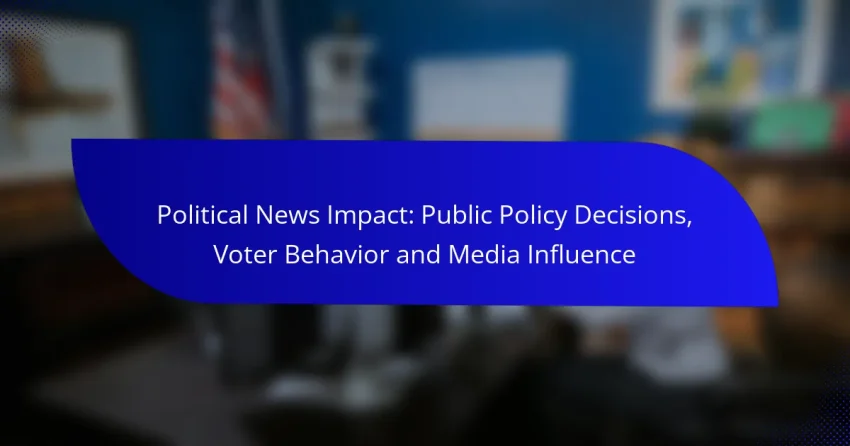Political news plays a crucial role in shaping public policy decisions and influencing voter behavior. By framing issues and guiding public perception, the media can significantly impact legislative outcomes and electoral results. The narratives constructed by various media outlets not only inform but also sway how individuals understand and respond to political matters.
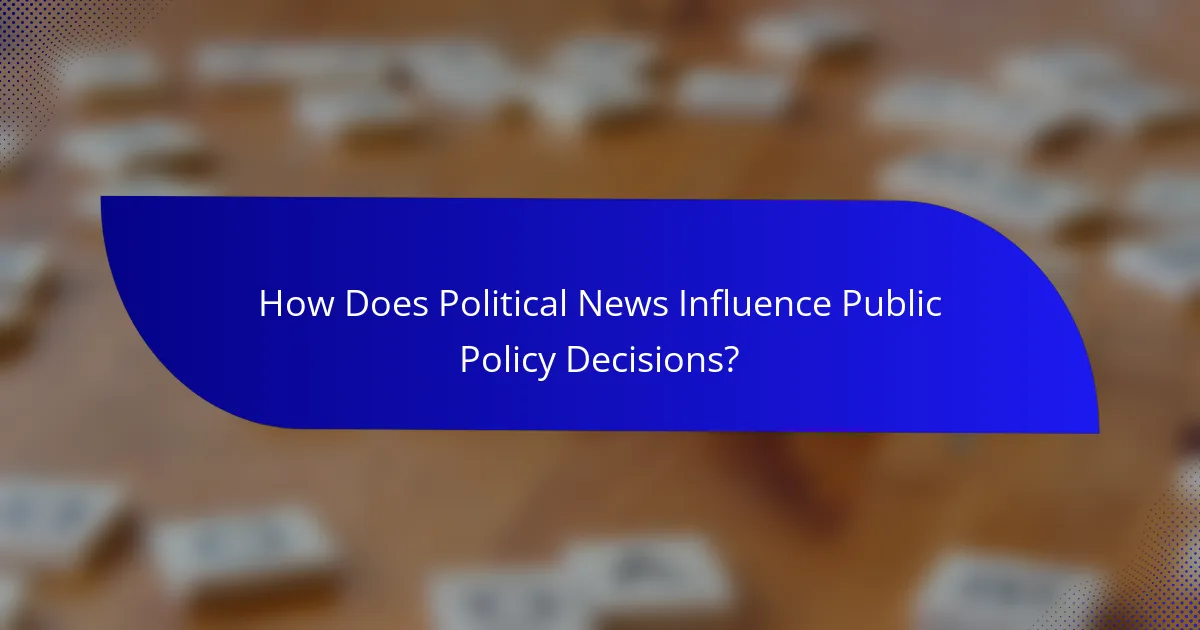
How Does Political News Influence Public Policy Decisions?
Political news significantly shapes public policy decisions by framing issues, influencing public perception, and guiding the priorities of policymakers. The way news is presented can alter the public’s understanding and response to various political matters, ultimately affecting legislative outcomes.
Media framing effects
Media framing effects occur when the presentation of news influences how audiences interpret political issues. For example, portraying a policy as a public health crisis can lead to increased urgency and support for related legislation. Different frames can evoke varying emotional responses, which can sway public opinion and, consequently, policy decisions.
To effectively utilize media framing, policymakers should consider how their messages are framed in the media and strive to align their communication strategies accordingly. Failing to do so may result in misinterpretations or backlash from the public.
Agenda-setting theory
Agenda-setting theory posits that the media doesn’t tell people what to think, but rather what to think about. By prioritizing certain issues, the media can elevate specific topics to the forefront of public discourse, compelling policymakers to address them. For instance, extensive coverage of climate change has led to increased legislative focus on environmental policies.
Policymakers should monitor media trends to understand which issues are gaining traction and adjust their agendas accordingly. Ignoring these signals can lead to missed opportunities or public discontent.
Case studies of policy shifts
Several case studies illustrate how political news has directly influenced public policy shifts. For example, the coverage of the opioid crisis in the United States led to significant changes in drug policy and funding for addiction treatment programs. Similarly, media attention on police brutality has spurred legislative reforms in law enforcement practices.
Analyzing these case studies can provide valuable insights for policymakers. They should consider the role of media coverage in shaping public opinion and be prepared to respond to emerging issues highlighted in the news.
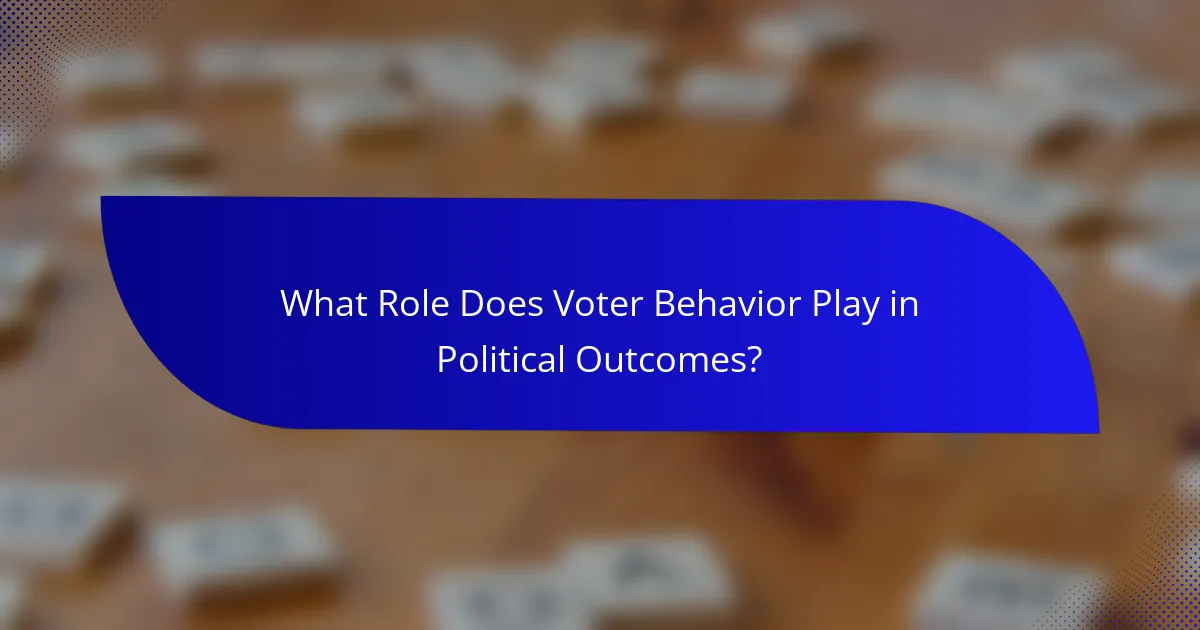
What Role Does Voter Behavior Play in Political Outcomes?
Voter behavior significantly influences political outcomes by determining which candidates and policies gain support during elections. Factors such as media influence, public sentiment, and demographic characteristics shape how individuals decide to vote, ultimately affecting the direction of public policy.
Impact of media coverage on voter turnout
Media coverage plays a crucial role in driving voter turnout by informing the public about candidates, issues, and election logistics. Extensive coverage can increase awareness and motivate individuals to participate in the electoral process, while limited or biased reporting may suppress engagement.
For example, during high-profile elections, candidates who receive more media attention often see higher voter turnout rates. Strategies to enhance media engagement include leveraging social media platforms and traditional news outlets to reach diverse audiences effectively.
Voter sentiment analysis
Voter sentiment analysis involves gauging public opinion on candidates and policies, which can predict electoral outcomes. Techniques such as surveys, focus groups, and social media monitoring help identify prevailing attitudes and concerns among the electorate.
Understanding voter sentiment allows campaigns to tailor their messages and strategies. For instance, if a significant portion of the electorate expresses concern about economic issues, candidates may prioritize economic policies in their platforms to resonate with voters.
Demographic influences on voting
Demographic factors such as age, gender, race, and socioeconomic status significantly influence voting behavior. Different groups may have distinct priorities and voting patterns, which can shape election results and policy decisions.
For example, younger voters tend to prioritize climate change and social justice, while older voters may focus on healthcare and retirement security. Campaigns that effectively address the specific needs and concerns of various demographic groups can enhance their chances of success at the polls.
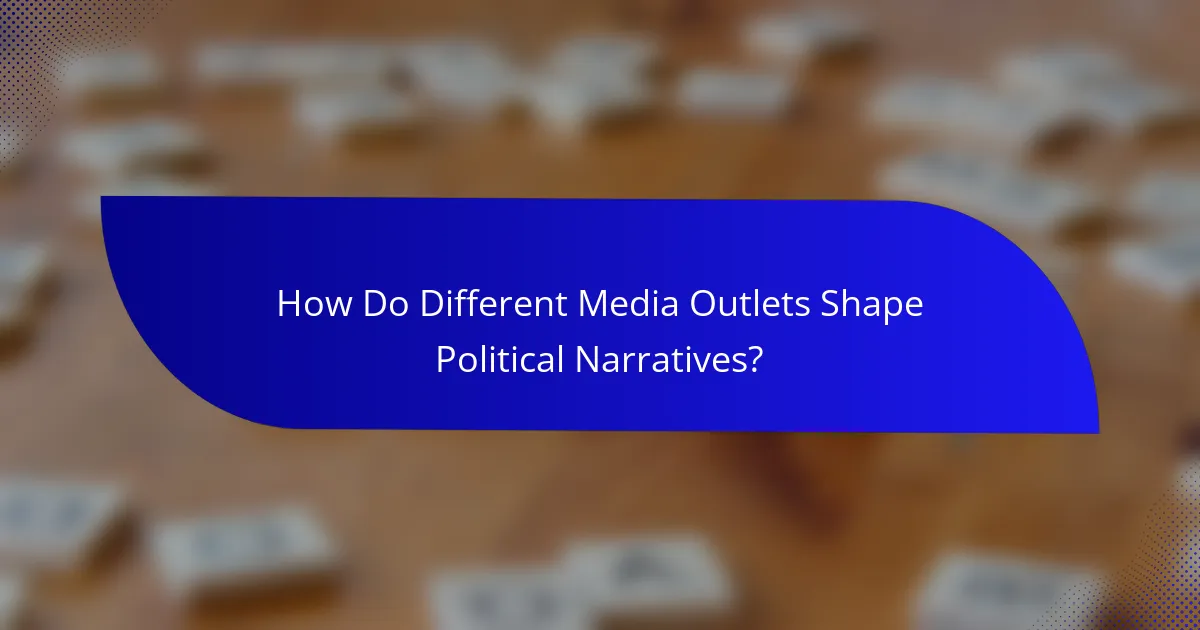
How Do Different Media Outlets Shape Political Narratives?
Different media outlets shape political narratives by framing stories in ways that influence public perception and voter behavior. The choice of language, focus, and context can significantly alter how audiences understand political events and issues.
Comparative analysis of news sources
News sources vary widely in their editorial slants and audience targeting. For instance, traditional outlets like CNN or BBC may prioritize factual reporting, while others like Fox News or Breitbart may adopt more opinionated stances. This divergence affects how political narratives are constructed and perceived.
When analyzing news sources, consider their ownership, funding, and audience demographics. For example, a source funded by corporate interests may present news differently than a nonprofit outlet focused on public interest journalism. Understanding these factors can help readers critically evaluate the information presented.
Influence of social media on public perception
Social media platforms like Twitter and Facebook play a crucial role in shaping public perception of political narratives. They allow for rapid dissemination of information, but they also enable the spread of misinformation and echo chambers where users only see viewpoints that reinforce their beliefs.
Engagement metrics, such as likes and shares, can amplify certain narratives while silencing others. Users should be cautious about the information they consume and share, verifying sources before accepting claims as truth. A diverse media diet can help mitigate bias and broaden perspectives.
Fact-checking and misinformation
Fact-checking organizations like Snopes or PolitiFact are essential in combating misinformation that can distort political narratives. They evaluate claims made by public figures and media outlets, providing clarity on what is factual and what is misleading.
Readers should actively seek out fact-checking resources, especially when encountering sensational claims. Being aware of common misinformation tactics, such as cherry-picking data or using emotionally charged language, can help individuals discern credible information from falsehoods. Regularly checking facts can enhance informed voter behavior and public discourse.
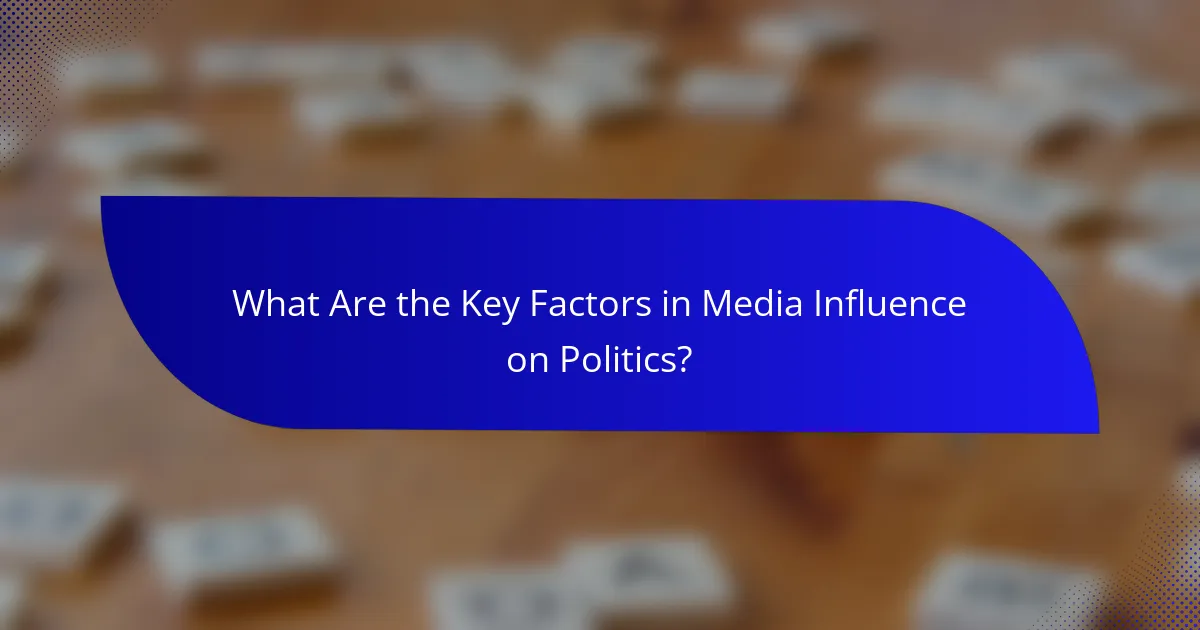
What Are the Key Factors in Media Influence on Politics?
Media influence on politics is primarily shaped by ownership structures, biases, and regulatory frameworks. These factors determine how information is presented and can significantly sway public opinion and voter behavior.
Ownership and bias in media
The ownership of media outlets plays a crucial role in shaping political narratives. When a few corporations or individuals control multiple media platforms, their biases can dominate public discourse, leading to a narrow perspective on political issues.
For example, if a media company has strong ties to a political party, its coverage may favor that party, potentially skewing public perception. This can create echo chambers where opposing viewpoints are underrepresented, affecting voter behavior during elections.
Regulatory frameworks affecting media
Regulatory frameworks govern how media operates, influencing its ability to report freely and fairly. In many countries, laws dictate ownership limits, content standards, and advertising practices, which can either promote diversity or lead to monopolistic practices.
For instance, in the European Union, regulations aim to ensure media pluralism and prevent excessive concentration of ownership. Understanding these regulations is essential for recognizing how they impact media influence on politics and public policy decisions.
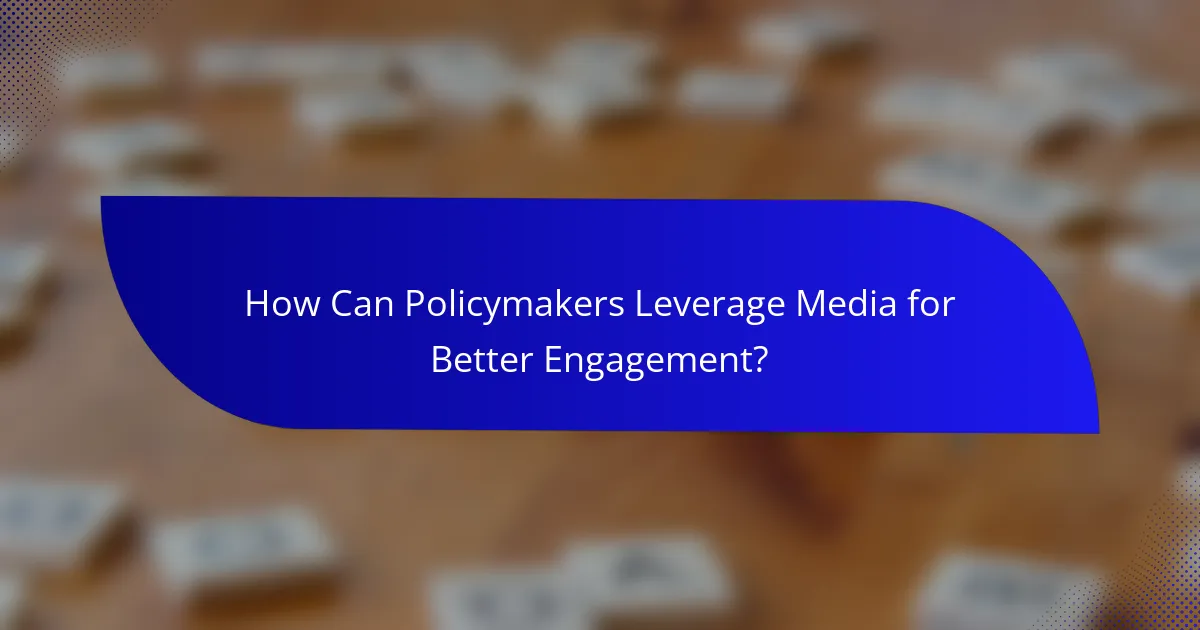
How Can Policymakers Leverage Media for Better Engagement?
Policymakers can enhance public engagement by strategically using media to communicate their messages effectively. By understanding the media landscape and audience preferences, they can foster transparency and build trust with constituents.
Strategies for effective communication
Effective communication requires clarity, consistency, and relevance. Policymakers should focus on delivering concise messages that resonate with the public’s concerns and interests. Utilizing storytelling techniques can help make complex policies more relatable and understandable.
Regular updates through press releases, newsletters, and public forums can keep the community informed. Engaging with local media outlets can also amplify messages and reach broader audiences, ensuring that key issues are highlighted.
Utilizing social media platforms
Social media platforms are powerful tools for direct engagement with the public. Policymakers should establish a presence on platforms like Facebook, Twitter, and Instagram to share updates, respond to inquiries, and gather feedback. This two-way communication fosters a sense of community and involvement.
When using social media, it’s crucial to tailor content to each platform’s audience. Visual content, such as infographics or short videos, can enhance message retention and encourage shares. Policymakers should also monitor interactions to gauge public sentiment and adjust strategies accordingly.
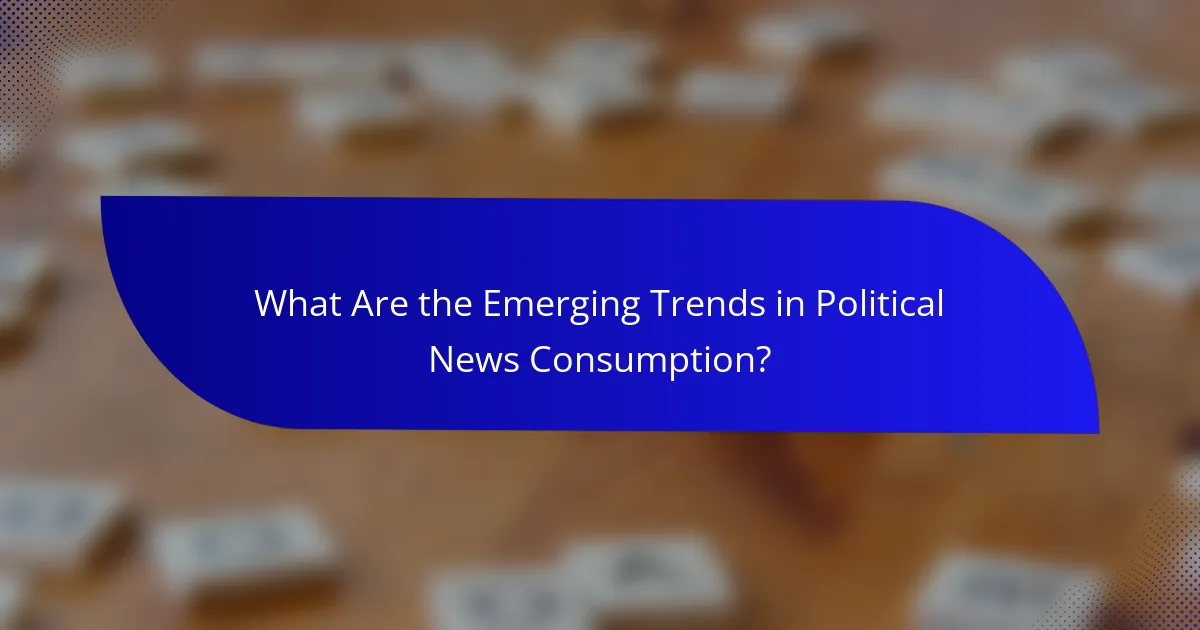
What Are the Emerging Trends in Political News Consumption?
Emerging trends in political news consumption indicate a shift towards digital platforms, with audiences increasingly favoring social media and online news outlets over traditional sources. This change is reshaping how information is disseminated and consumed, influencing public opinion and voter behavior.
Shift to Digital Platforms
The transition from traditional media to digital platforms is significant. Many consumers now rely on social media for real-time updates, often prioritizing platforms like Twitter, Facebook, and Instagram. This shift allows for quicker access to information but raises concerns about the accuracy and reliability of news sources.
Digital platforms also enable personalized news feeds, which can create echo chambers where users are exposed primarily to viewpoints that align with their own. This can impact voter behavior by reinforcing existing beliefs and reducing exposure to diverse perspectives.
Influence of Social Media
Social media has a profound influence on political news consumption, shaping public discourse and voter engagement. Campaigns increasingly utilize these platforms to reach potential voters directly, often employing targeted advertising to maximize impact.
However, the rapid spread of misinformation on social media can distort public understanding of political issues. Users must critically evaluate the sources of their information to avoid falling prey to false narratives that can sway public opinion.
Changing Demographics of News Consumers
The demographics of news consumers are evolving, with younger audiences gravitating towards digital news sources. This trend is evident in the preference for video content and interactive news formats, which engage users more effectively than traditional articles.
As younger generations become more politically active, their consumption habits will likely influence the types of news coverage that media outlets prioritize. Understanding these demographic shifts is crucial for political campaigns aiming to connect with a broader audience.
Impact on Voter Behavior
Political news consumption trends significantly impact voter behavior, as the way information is presented can shape perceptions of candidates and policies. For instance, sensationalized headlines or viral content can lead to increased emotional responses, influencing voting decisions.
Moreover, the timing of news releases can affect voter turnout. Information released close to election dates may have a more immediate impact, potentially swaying undecided voters. Campaigns must consider these dynamics when planning their communication strategies.
